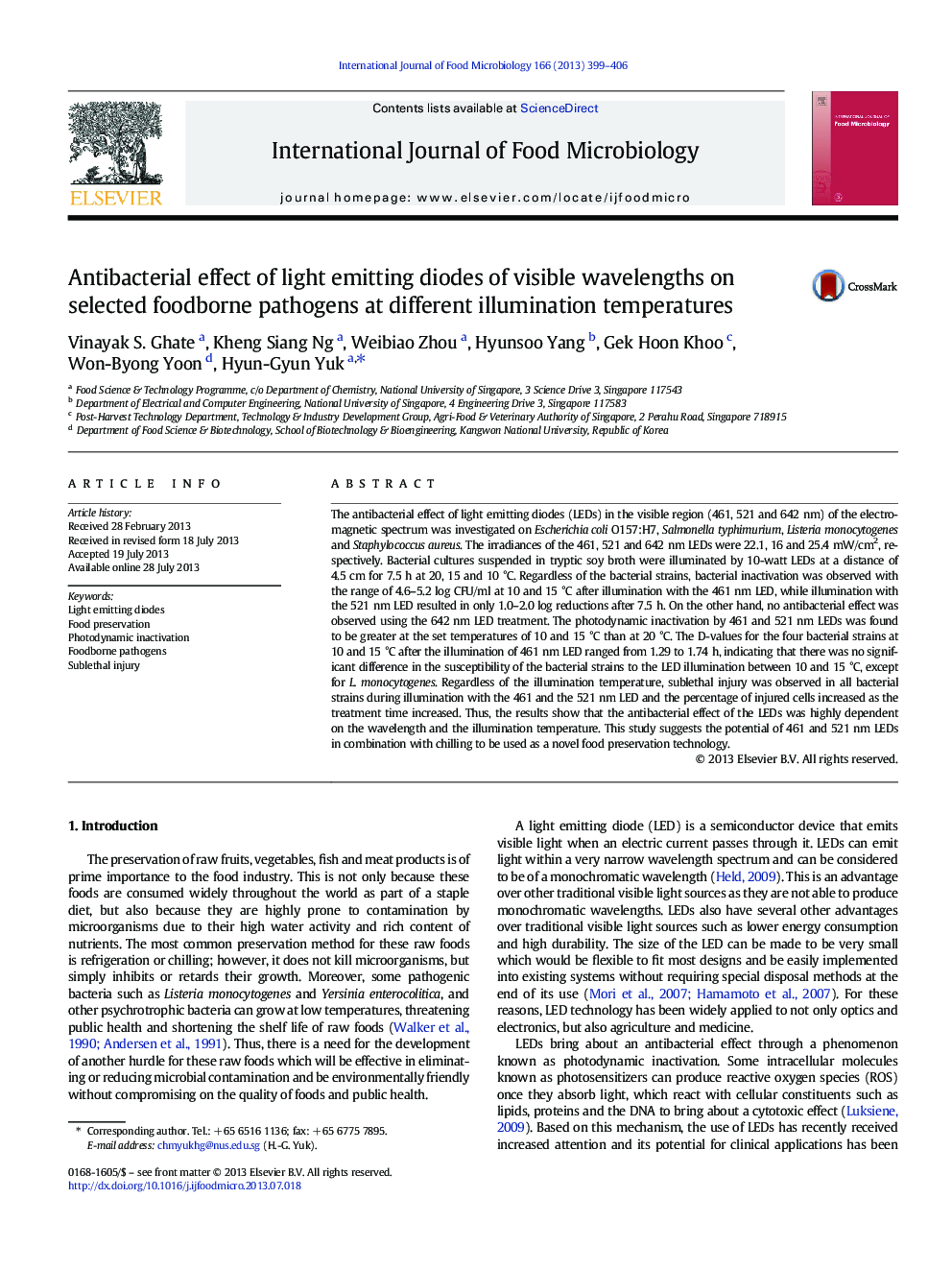| کد مقاله | کد نشریه | سال انتشار | مقاله انگلیسی | نسخه تمام متن |
|---|---|---|---|---|
| 6290231 | 1616617 | 2013 | 8 صفحه PDF | دانلود رایگان |
عنوان انگلیسی مقاله ISI
Antibacterial effect of light emitting diodes of visible wavelengths on selected foodborne pathogens at different illumination temperatures
ترجمه فارسی عنوان
اثر ضد باکتری دیودهای نوری از طول موج های قابل مشاهده بر روی پاتوژن های انتخاب شده غذایی در دماهای مختلف
دانلود مقاله + سفارش ترجمه
دانلود مقاله ISI انگلیسی
رایگان برای ایرانیان
کلمات کلیدی
موضوعات مرتبط
علوم زیستی و بیوفناوری
علوم کشاورزی و بیولوژیک
دانش تغذیه
چکیده انگلیسی
The antibacterial effect of light emitting diodes (LEDs) in the visible region (461, 521 and 642 nm) of the electromagnetic spectrum was investigated on Escherichia coli O157:H7, Salmonella typhimurium, Listeria monocytogenes and Staphylococcus aureus. The irradiances of the 461, 521 and 642 nm LEDs were 22.1, 16 and 25.4 mW/cm2, respectively. Bacterial cultures suspended in tryptic soy broth were illuminated by 10-watt LEDs at a distance of 4.5 cm for 7.5 h at 20, 15 and 10 °C. Regardless of the bacterial strains, bacterial inactivation was observed with the range of 4.6-5.2 log CFU/ml at 10 and 15 °C after illumination with the 461 nm LED, while illumination with the 521 nm LED resulted in only 1.0-2.0 log reductions after 7.5 h. On the other hand, no antibacterial effect was observed using the 642 nm LED treatment. The photodynamic inactivation by 461 and 521 nm LEDs was found to be greater at the set temperatures of 10 and 15 °C than at 20 °C. The D-values for the four bacterial strains at 10 and 15 °C after the illumination of 461 nm LED ranged from 1.29 to 1.74 h, indicating that there was no significant difference in the susceptibility of the bacterial strains to the LED illumination between 10 and 15 °C, except for L. monocytogenes. Regardless of the illumination temperature, sublethal injury was observed in all bacterial strains during illumination with the 461 and the 521 nm LED and the percentage of injured cells increased as the treatment time increased. Thus, the results show that the antibacterial effect of the LEDs was highly dependent on the wavelength and the illumination temperature. This study suggests the potential of 461 and 521 nm LEDs in combination with chilling to be used as a novel food preservation technology.
ناشر
Database: Elsevier - ScienceDirect (ساینس دایرکت)
Journal: International Journal of Food Microbiology - Volume 166, Issue 3, 16 September 2013, Pages 399-406
Journal: International Journal of Food Microbiology - Volume 166, Issue 3, 16 September 2013, Pages 399-406
نویسندگان
Vinayak S. Ghate, Kheng Siang Ng, Weibiao Zhou, Hyunsoo Yang, Gek Hoon Khoo, Won-Byong Yoon, Hyun-Gyun Yuk,
